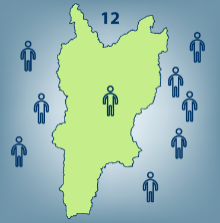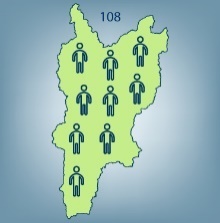Forests, wildfire risk, and watershed health in the Rio Grande river basin
DOI Generic Clearance for the Collection of Qualitative Feedback on Agency Service Delivery
Instru Wildfire Risk Rio Grande 2018-10-26
Forests, wildfire risk, and watershed health in the Rio Grande river basin
OMB: 1090-0011
Forest Restoration and Your Watershed

The
map above shows a portion of the Rio Grande river basin. For this
survey, we call the area shown in the map the Rio Grande watershed.
If you live in this area, the majority of your water comes from
forests in the mountains in the Rio Grande watershed. Restoring and
protecting forests in the Rio Grande watershed is therefore necessary
for securing your water resources.
Please consult the map provided. Do you believe your primary residence is within the boundaries of the Rio Grande watershed?
Yes
No
Not sure
What is the zip code of your primary residence?
________________________________________________________________
Your Municipal Water Source
Water supplied to residents of the Rio Grande watershed is either pumped from the groundwater aquifer that lies below the surface or is dammed and diverted from surface water (rivers). Groundwater and surface water resources are replenished by snowmelt in forested mountains. Streams and rivers bring water to the Rio Grande where it is stored in reservoirs awaiting transport to water treatment facilities.

Water resource management currently focuses on using surface water and reducing reliance on limited groundwater. Surface water resources are vulnerable in forests that are susceptible to extreme wildfire. Intense rainfall events after extreme wildfire can produce flood flows. Flood flows transport large amounts of sediment, nutrients, and other contaminants in surface water and can dramatically increase treatment costs.
In 2011, the Las Conchas wildfire brought sediment to Albuquerque’s reservoirs making surface water unsafe to drink. To avoid high treatment costs or an interruption in municipal water supply, Albuquerque consumed 40 days’ worth of groundwater resources.
Extreme
Wildfire
The
Rio Grande watershed is currently suffering from a prolonged period
of drought. Drought, or lack of precipitation, leaves vegetation dry
and easily ignited. In the past, it was believed that suppressing all
wildfire was in the best interest of New Mexico residents. Past fire
suppression left the forested mountains overgrown. The combination of
drought and overgrown forests increase the risk of extreme wildfire
by providing favorable conditions for wildfire to start and easily
spread.

Wildfires commonly start in dry grasses and woody brush from either human (uncared for campfires, burning debris, cigarettes, etc.) or natural (lightning) causes. In overgrown forests or extreme weather conditions, flames can climb to the top of the forest, or the canopy. Once the fire reaches the canopy, it quickly spreads, creating a dangerous and costly scenario for wildland firefighters.
Your Experience with Wildfire
In this first section of the survey, we ask about your property in the Rio Grande watershed.
Do you own or rent your property? (Fill in one circle)
-
Own and occupy
Own and rent out short term
Own and rent out long term
I am a renter
What is the closest distance (as a crow flies) a wildfire has come to your property? (Fill in one circle)
-
There has been a wildfire on my property
Less than 2 miles away but not on my property
2 to 10 miles away
More than 10 miles away
Not sure
Has your property ever had smoke
or fire damage from a wildfire?
(Fill
in one circle)
-
No
Yes, my property has had smoke damage
Yes, my property has had fire and smoke damage
Was your property destroyed by a fire? (Fill in one circle)
No
Yes
Have you ever talked about wildfire issues with a neighbor? (Fill in one circle)
-
No
Yes
Negative Impacts of Extreme Wildfire

Reduced air quality- As size and intensity of a wildfire increases, the amount of material consumed increases producing more airborne particulates, the main health concern related to air quality issues resulting from extreme wildfires. The finer the particles are the farther they can travel, posing a possible health hazard to those far away from direct threat of the wildfire.
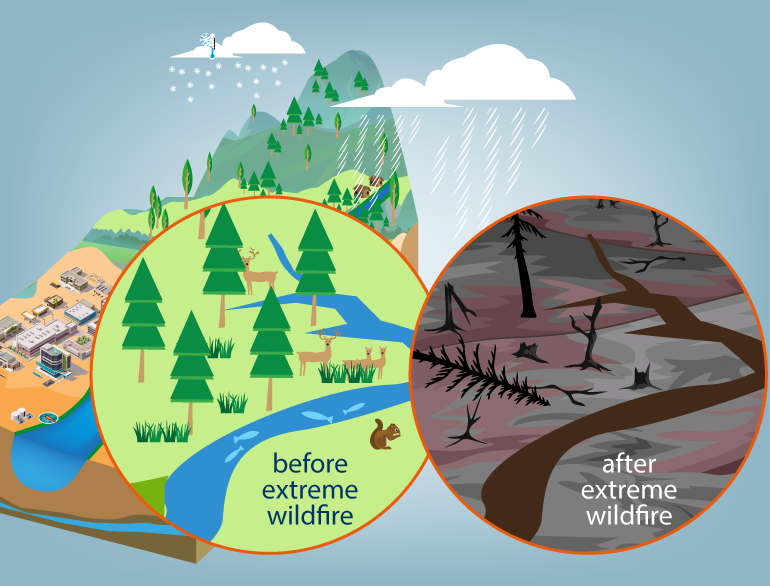
Destruction of wildlife habitat and ecosystem degradation- Extreme wildfire destroys habitats provided by the forest creating overcrowding and increasing competition for survival. Wildfire also degrades ecosystems dependent on the forest. Fish and other aquatic species rely on the water provided by the forests to support their habitat.

Detriment
to water quality-
Wildfire eliminates soil’s ability to absorb water.
Precipitation falling on recently burned land produces damaging flood
flows that collect and transport sediment and debris. Sediment and
debris are carried into surface water bodies polluting the water
resources utilized to fulfill municipal and agricultural water
demand.

Compromises groundwater resources- The forested mountains of the Rio Grande watershed replenish the groundwater aquifer through percolation, or the slow filtration of water through the soil. Extreme wildfire results in limited percolation of groundwater. After extreme wildfire, it may take years or decades for used groundwater supplies to be replenished.

Damage
or degrade private property-
Extreme wildfire can cause smoke and structural damage to homes or
property bordering fire prone forests. Precipitation falling on
recently burned areas cannot soak into the ground and water running
off the land is not slowed by vegetation. Therefore, an increase in
precipitation runoff can also cause flood damage to homes and
property by overflowing streams and rivers.
Wildfire in the Rio Grande Watershed
If there were a wildfire in the Rio Grand watershed, how likely do you think it is that the following would occur? (Fill in one circle per row) (Fill in one circle per row)
|
Extremely likely |
Very likely |
Moderately likely |
Slightly likely |
Not at all likely |
Not applicable |
The air quality would become unhealthy. |
|
|
|
|
|
|
Wildlife habitat would be severely damaged. |
|
|
|
|
|
|
My community water supply would be threatened. |
|
|
|
|
|
|
My property would have some physical damage. |
|
|
|
|
|
|
My property would be destroyed. |
|
|
|
|
|
|
My community water supply would be threatened. |
|
|
|
|
|
|
Reducing
the Risk of Extreme Wildfires
Historical
forest conditions were self-maintained by the natural occurrence of
low-intensity, naturally caused wildfire. Current forest restoration
strategies focus on returning forests to a state that resembles
their historic condition through wildfire risk reduction treatments.
Treatments are typically conducted in two phases:

Forest
thinning reduces
the number of trees by removing younger, smaller trees that act as a
ladder to the canopy of the forest. Thinning the forest hinders
wildfire’s ability to spread from tree to tree.
Low-intensity prescribed
burns reduce highly flammable underbrush and small trees in a manner
that can be contained and easily controlled. The risk of an extreme
wildfire starting is reduced in areas treated with prescribed burns.
Traits
of Wildfire Risk Reduction


Healthy ecosystems and streams (for fish and wildlife habitat)- Fish and wildlife depend on healthy forests and water sources. Forest restoration enhances forest and downstream water resources and protects habitat from being consumed or degraded by extreme wildfire. Forest restoration can have positive impacts on forests and water beyond the treated area.
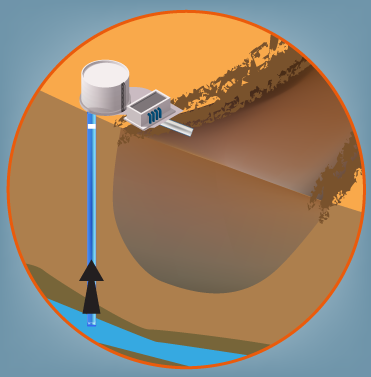
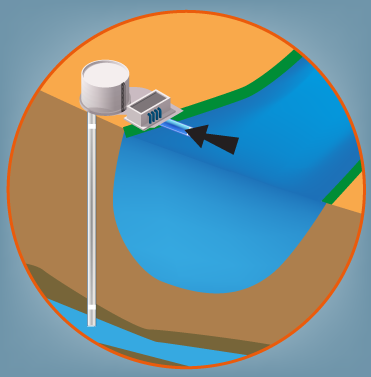
Municipal
source water protection-
Municipal water can come from either surface water or groundwater
supplies. Extreme wildfire can make surface water unavailable and
force municipalities to use groundwater, which is a limited resource.
Forest restoration can reduce the need for municipalities to rely on
groundwater. In 2017, 30% of Albuquerque’s water came from
groundwater (approximately 110 days’ worth).
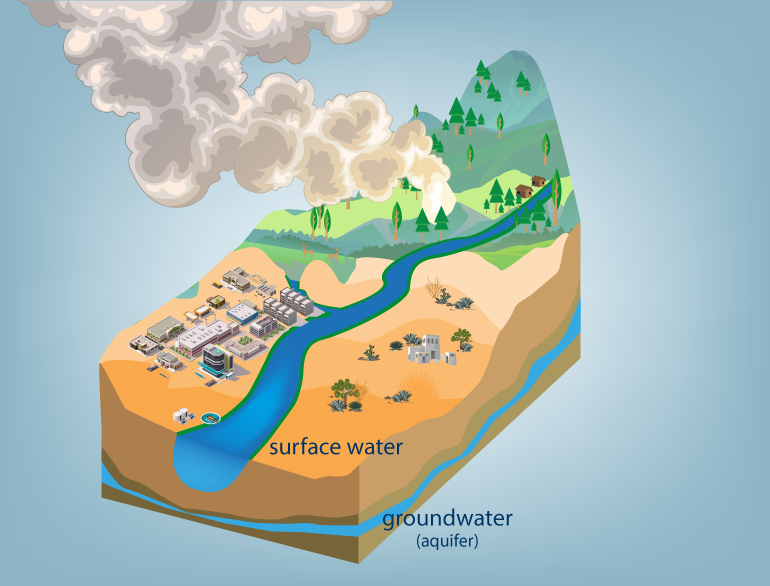
Air
quality- The Air
Quality Index rates air quality daily and is used notify the public
of potentially hazardous conditions. The Index consists of 6 levels.

Wildfire smoke can impose adverse health effects,
especially in sensitive people. By reducing the frequency of extreme
wildfire, forest restoration can reduce the amount of smoke during
peak wildfire season. On a typical year, Albuquerque has about 7
unhealthy air quality days during peak wildfire season. Since 2011,
individual years have ranged from 0 unhealthy days (without extreme
fires) to 21 days (during the Las Conchas Fire).

Targets areas adjacent to private property- Forest restoration adjacent to private property reduces the potential for structural damage from wildfires and post-wildfire flooding.

Supports
local industry and creates jobs-
Forest restoration provides an opportunity to support the local
economy by creating jobs and generating local business activity.
Depending on contracting, between 2 and 18 local jobs can be created
per $1 million spent. Some local jobs directly involve restoration,
and some are in supporting industries. Approximately $6 million is
currently invested annually in restoration in the Rio Grande
watershed.
Funding Healthy Forests in The Rio Grande Watershed
Funding to support wildfire risk reduction in the Rio Grande watershed remains a challenge due to the costly nature of the projects. Some restoration is financed through government funding and contributions made by private investors. However, additional funding alternatives must be explored to support large scale restoration treatments.
The following questions ask you to choose between two potential forest restoration project. Each project has different characteristics. The restoration fee is a one-time payment on your New Mexico state income taxes to support the project. Fees would go directly to a New Mexico Forest Restoration fund used solely for projects within the Rio Grande watershed.
Please consider your household budget when choosing your preferred project. If the cost is higher than what you are willing to pay, please choose to support neither project.
Options A and B are restoration projects in the Rio Grande watershed. Please choose your preferred option, or choose the status quo.
Attribute |
Project A |
Project B |
Status Quo |
Healthy ecosystems and streams (for fish and wildlife habitat) |
4 out of 5 forest restoration projects target high-impact areas for fish and wildlife habitat
|
2 out of 5 forest restoration projects target high-impact areas for fish and wildlife habitat
|
0 out of 5 forest restoration projects target high-impact areas for fish and wildlife habitat.
|
Municipal source water protection
|
200
days of groundwater resources are consumed in a year |
110
days of groundwater resources are consumed in a year |
110
days of groundwater resources are consumed in a year |
Air quality
|
0
to 7 days through peak wildfire season exceed moderate
|
0 to 7 days through peak wildfire season exceed moderate
|
7
to 14 days through peak wildfire season exceed moderate
|
Targets areas adjacent to private property |
2
out of 5 restoration projects target areas adjacent to private
property |
2
out of 5 restoration projects target areas adjacent to private
property |
0 out of 5 restoration projects target areas adjacent to private property
|
Supports local industry and creates jobs
|
12
local jobs created from $6M in restoration |
108
local jobs created from $6M in restoration |
12
local jobs created from $6M in restoration |
Restoration fee |
$150 |
$160 |
$0 |
|
I choose Project A |
I choose Project B |
I choose Neither |
Options A and B are restoration projects in the Rio Grande watershed. Please choose your preferred option, or choose the status quo.
Attribute |
Project A |
Project B |
Status Quo |
Healthy ecosystems and streams (for fish and wildlife habitat) |
4 out of 5 forest restoration projects target high-impact areas for fish and wildlife habitat
|
2 out of 5 forest restoration projects target high-impact areas for fish and wildlife habitat
|
0 out of 5 forest restoration projects target high-impact areas for fish and wildlife habitat.
|
Municipal source water protection
|
200
days of groundwater resources are consumed in a year |
55
days of groundwater resources are consumed in a year |
110
days of groundwater resources are consumed in a year |
Air quality
|
21
or more days through peak wildfire season exceed moderate
|
0 to 7 days through peak wildfire season exceed moderate
|
7 to 14 days through peak wildfire season exceed moderate
|
Targets areas adjacent to private property |
2
out of 5 restoration projects target areas adjacent to private
property |
4
out of 5 restoration projects target areas adjacent to private
property
|
0 out of 5 restoration projects target areas adjacent to private property
|
Supports local industry and creates jobs
|
12
local jobs created from $6M in restoration |
108
local jobs created from $6M in restoration |
12
local jobs created from $6M in restoration |
Restoration fee |
$150 |
$200 |
$0 |
|
I choose Project A |
I choose Project B |
I choose Neither |
Options A and B are restoration projects in the Rio Grande watershed. Please choose your preferred option, or choose the status quo.
Attribute |
Project A |
Project B |
Status Quo |
Healthy ecosystems and streams (for fish and wildlife habitat) |
0 out of 5 forest restoration projects target high-impact areas for fish and wildlife habitat.
|
4
out of 5 forest restoration projects target high-impact areas for
fish and wildlife habitat |
0 out of 5 forest restoration projects target high-impact areas for fish and wildlife habitat.
|
Municipal source water protection
|
200
days of groundwater resources are consumed in a year |
55
days of groundwater resources are consumed in a year |
110
days of groundwater resources are consumed in a year |
Air quality
|
21
or more days through peak wildfire season exceed moderate
|
0 to 7 days through peak wildfire season exceed moderate
|
7 to 14 days through peak wildfire season exceed moderate
|
Targets areas adjacent to private property |
4
out of 5 restoration projects target areas adjacent to private
property
|
4
out of 5 restoration projects target areas adjacent to private
property
|
0 out of 5 restoration projects target areas adjacent to private property
|
Supports local industry and creates jobs
|
108
local jobs created from $6M in restoration |
108
local jobs created from $6M in restoration |
12
local jobs created from $6M in restoration |
Restoration fee |
$80 |
$200 |
$0 |
|
I choose Project A |
I choose Project B |
I choose Neither |
You and Your Watershed
I rely on the Rio Grande watershed for (select all that apply):
supporting my field of employment
recreation
cultural/ traditional uses
municipal water supply
irrigating farm land
watering livestock
research
Other ________________________________________________
I partake in the following recreational activities within the Rio Grande watershed (select all that apply):
Biking
Bird watching/Wildlife viewing
Camping
Fishing
Hiking
Horseback/Trail riding
Hunting
Nonmotorized water sports
Motorized water sports
ORV access
Painting/Photography
Picnicking
Trail running
Other ________________________________________________
Approximately how many days do you designate for recreation in the Rio Grande watershed per year? Consider 90 days to be 90+ days.
|
0 |
30 |
60 |
90 |
Days |
|
Demographic Information
What is your age? (Fill in the blank)
_________ years old
Are you? (Fill in one circle)
-
Male
Female
Other/Prefer not to specify
What is the highest grade or year of school you completed? (Fill in one circle)
-
Less than high school
High school graduate
Some college or technical school
Technical or trade school
College graduate
Some graduate work
Advanced Degree (M.D., M.A., M.S., Ph.D., etc.)
Which of the following best
describes your current employment situation?
(Fill
in one circle)
-
Employed full time (including self-employed)
Employed part time (including self-employed)
Unemployed or do not work outside of the home
Retired
Which of the following categories
describes your annual household income?
(Fill
in one circle)
-
Less than $15,000
$15,000 - $24,999
$25,000 – $34,999
$35,000 - $49,999
$50,000 - $74,999
$75,000 - $99,999
$100,000 - $149,999
$150,000 - $199,999
More than $200,000
How long have you or your family
lived in the Rio Grande watershed?
(Fill
in one circle)
-
I recently moved to the area
I consider myself a long term resident
I was born and raised here
My family has lived here for multiple generations
Are you of Hispanic/Latino or a Spanish origin?
Yes
No
How would you describe your race?
American Indian or Alaska Native
Asian
Black or African American
Native Hawaiian or Pacific Islander
White
Other
We thank you for your participation. We truly value your opinion. Please use the space below to provide any additional feedback or comments regarding your experience.
________________________________________________________________
Paperwork Reduction Act Statement: We are collecting this information subject to the Paperwork Reduction Act (44 U.S.C. 3501) to assess your preferences for forest management in New Mexico. Your response is voluntary and results we will not share them publicly. We may not conduct or sponsor, and you are not required to respond to a collection of information, unless it displays a currently valid OMB Control Number. OMB has reviewed and approved this survey and assigned OMB Control Number 1090-0001, which expires 10/31/2021.
Estimated Burden Statement: We estimate this questionnaire will take you 20 minutes to complete, including time to read instructions, gather information, and complete and submit your responses. You may submit comments on any aspect of this information collection to the Information Collection Clearance Officer, James Sayer, jsayer@usgs.gov.
| File Type | application/vnd.openxmlformats-officedocument.wordprocessingml.document |
| File Title | Wildfire Risk Reduction - USGS |
| Author | Qualtrics |
| File Modified | 0000-00-00 |
| File Created | 2021-01-20 |
© 2025 OMB.report | Privacy Policy






